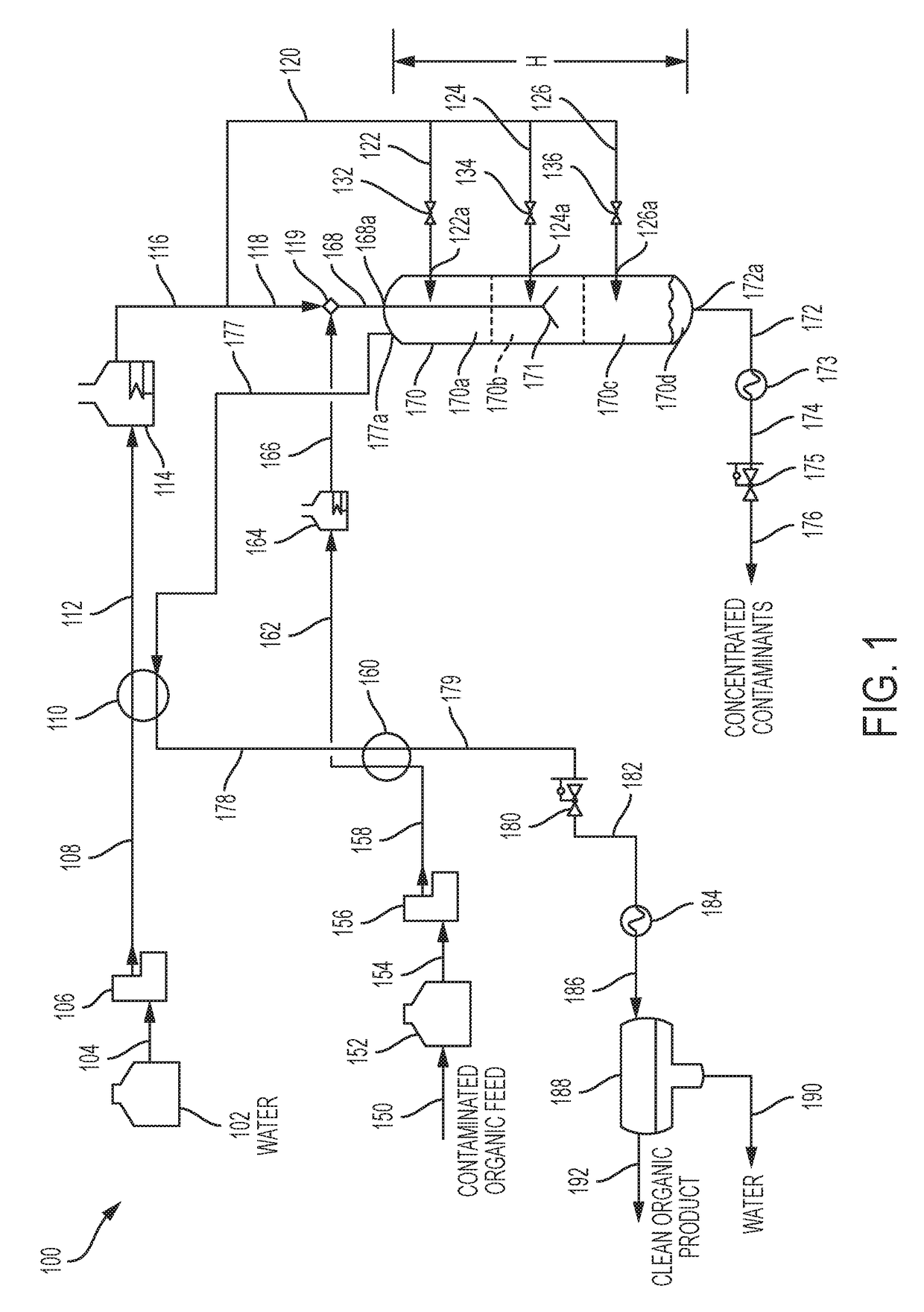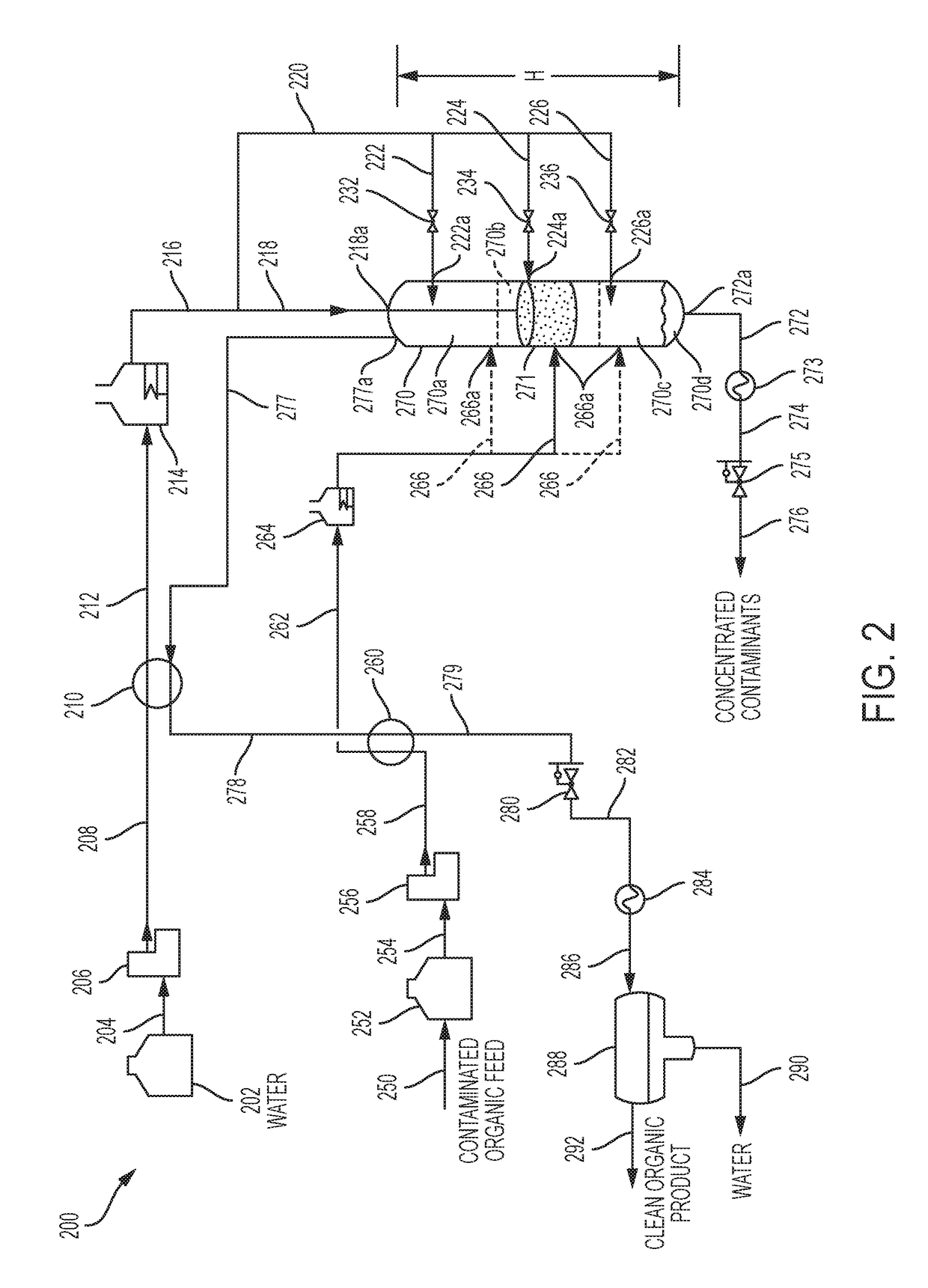Supercritical Water Separation Process
a separation process and supercritical water technology, applied in the direction of separation processes, supercritical condition processes, hydrocarbon oil treatment products, etc., can solve the problems of high cost of construction and operation, large amount of solvent in the deafphalting process, and 80% of the vacuum distillation system of refineries, so as to achieve rapid reduction of scw density, good separation performance, and fast separation rate
- Summary
- Abstract
- Description
- Claims
- Application Information
AI Technical Summary
Benefits of technology
Problems solved by technology
Method used
Image
Examples
example 1
ic Tower Bottoms (ATB) Separation
[0044]A bench-scale separation system was configured as shown in FIG. 1. In this configuration, SCW 118 and contaminated oil 166 were mixed at tee connection 119 immediately before being fed into the separation vessel 170. A control stream of SCW 126 was also fed at location 126a into separation vessel 170 just below the mixing zone. The inside diameter of the bench-scale separation vessel was 2.8 cm (1.1 inches) and the height of the vessel was 1.65 meters (65 inches). The contaminated organic feed oil was an atmospheric tower bottoms (ATB) from a refinery in the intermountain west. This particular ATB had been previously treated in a ROSE solvent deasphalting system so it exhibited relatively low asphaltene content. However, this ATB did contain metals, sulfur, and had a relatively high Conradson Carbon Residue (CCR).
[0045]The bench-scale separation system was operated with continuous flow of ATB, mix water, control water. Overhead product water an...
example 2
Bitumen Separation
[0047]A bench-scale separation system was configured as shown in FIG. 1. In this configuration, SCW 118 contaminated organic feed oil 166 and control SCW 126 were delivered to the separation vessel in the same manner as Example 1. The contaminated organic feed oil was Canadian bitumen that was produced by the SAGD process (Steam-Assisted, Gravity Drain). In the SAGD process, steam is pumped into the bitumen-containing geologic formation and a hot slurry of water and bitumen is recovered. Water had been previously removed from this sample of bitumen. However, the supercritical water separation system is capable of processing the bitumen and water slurry without the need to separate the water. The density and viscosity of most Canadian bitumens are too high to permit transporting by pipeline without extensive upgrading. The purpose of this example was to demonstrate that the present invention can reduce the density and viscosity of the bitumen to meet pipeline requir...
PUM
 Login to View More
Login to View More Abstract
Description
Claims
Application Information
 Login to View More
Login to View More - R&D
- Intellectual Property
- Life Sciences
- Materials
- Tech Scout
- Unparalleled Data Quality
- Higher Quality Content
- 60% Fewer Hallucinations
Browse by: Latest US Patents, China's latest patents, Technical Efficacy Thesaurus, Application Domain, Technology Topic, Popular Technical Reports.
© 2025 PatSnap. All rights reserved.Legal|Privacy policy|Modern Slavery Act Transparency Statement|Sitemap|About US| Contact US: help@patsnap.com



